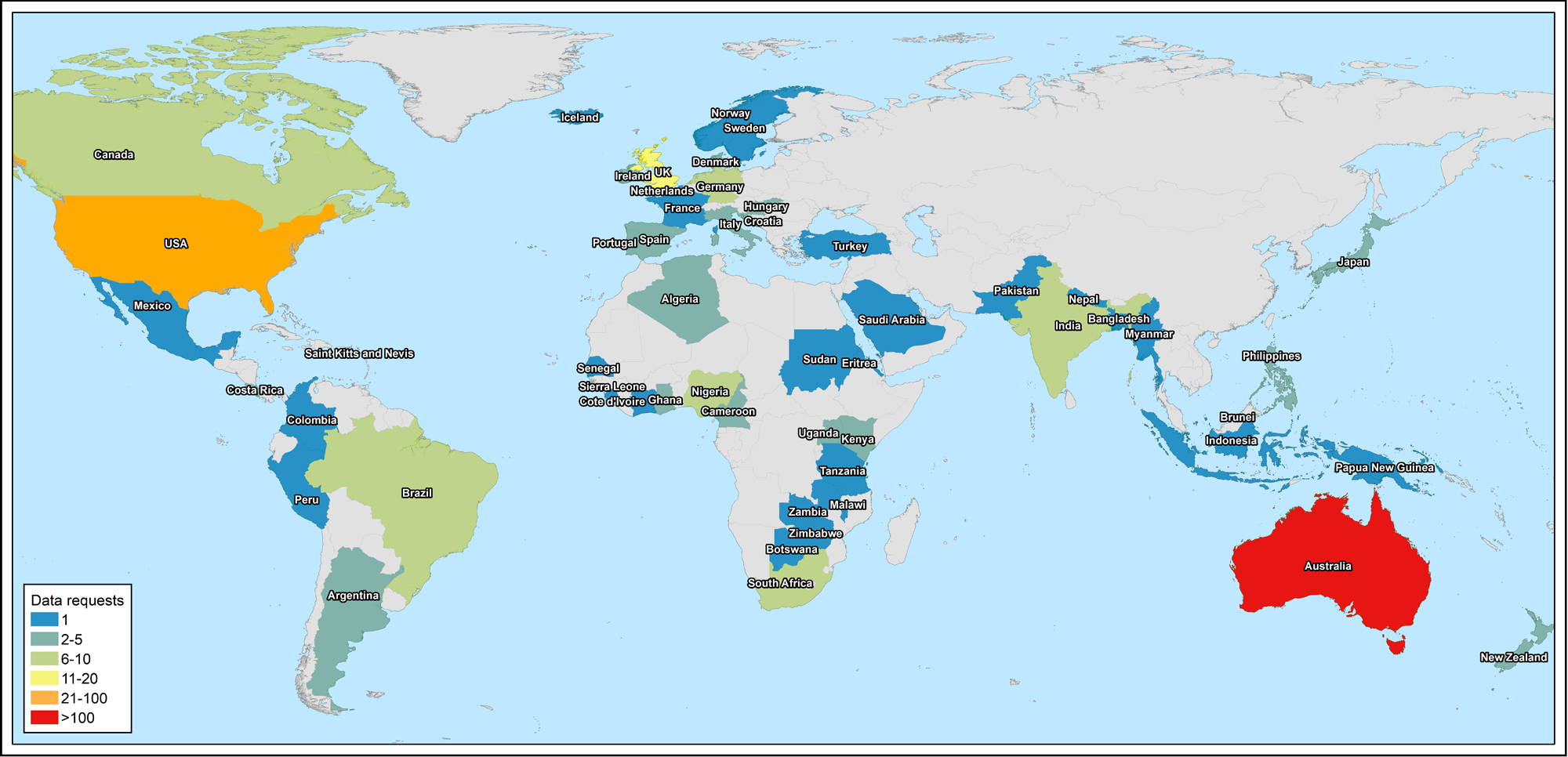In a continuation of our blogs on dealing with the COVID-19 Coronavirus, this week we thought we’d update our stakeholders on how we’re reviewing our approach to training. This follows on from the blog late last month about our last pre-Coronavirus face-to-face training session on our GRID product with South Coast NRM.
Not unexpectedly, we’ve had a rise in the number of people asking us for our freely available online QGIS training materials (currently for version 2.18, which is pretty old now – but the course is getting a makeover for version 3.10 soon). So we did a little digging on who’s using our course now — there’s been a bit more of a spread across the world:
The uptick in requests this year perhaps coinciding with people looking for things to do when they are at home in isolation.

This approach – create a series of videos that people watch and work through training guides – is one way to deliver online training. We thought we should identify some alternatives and how they might also be deployed.
We could deliver training workshops for our clients in exactly the same way – write a script, record a bunch of screencasts, record separate voice-overs, and then mash them all together with a blend of editing magic to create a course. While great for our free online QGIS course, it’s not an adequate replacement for face-to-face classroom training.
Lately, we’ve been investigating the capacity of all of our different internet connections from home to see if we can offer a live-streaming style approach. At the moment, most of us could do that, but there are always going to be issues – connections can drop for a bunch of reasons. So, if a live-streaming approach was going to happen (through whatever videoconferencing software our clients want us to use) it’d be best to break the training up into smaller pieces. This is an advantage, as it’s hard to focus on this type of videoconference for a long period of time (although we’re all getting used to it!).
We’ve also been looking at what schools are doing, using systems such as Google Classroom. Through this platform, in particular, you can create a nice blend of the two approaches: put together teaching materials, set up videoconferencing sessions to cover those materials, and then combine them with the available assessment frameworks. With training courses due for some projects in the next few months, we’re working on how these tools may be able to help deliver them, in these new circumstances we find ourselves in.
Necessity is certainly the mother of invention! In the last couple of weeks we’ve gone from having simple stored videos to creating full classes in Google Classroom, so we should be able to resume custom training for all of our clients within another week or so once we finalise our trials. And then, perhaps, all the people on this map (showing where people who have asked for training live) can have an even better experience!
If you are interested in some classroom based remote training (or even in being our guinea pigs in a couple of external ones that we intend to trial in the next few weeks), then please get in touch with us via training@gaiaresources.com.au and let us know what you are interested in! Or you can drop us a line on our social media streams – Facebook, Twitter or LinkedIn.
Stay safe and healthy, and see you online!
Piers


Comments are closed.